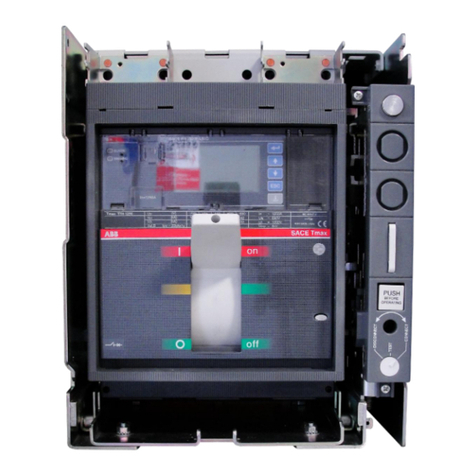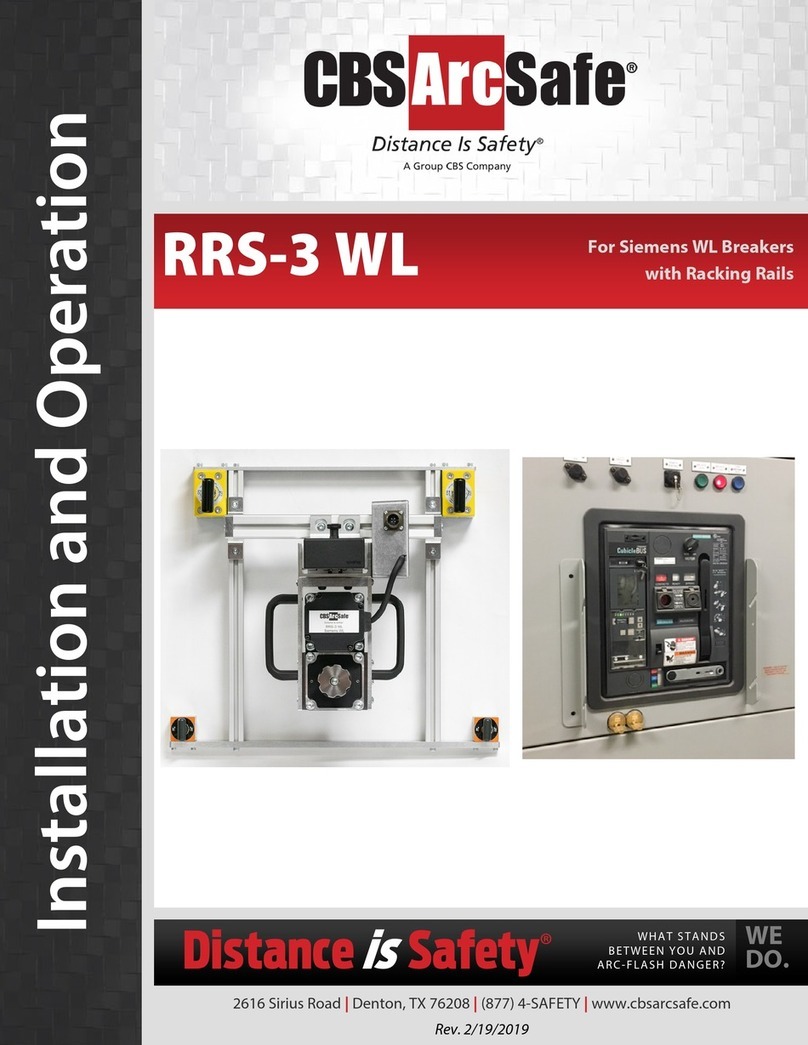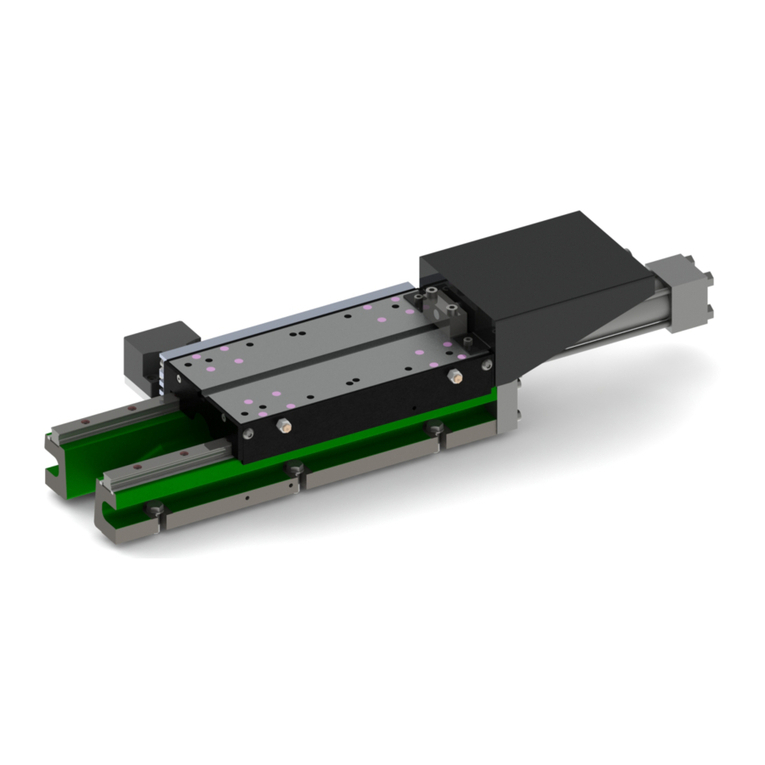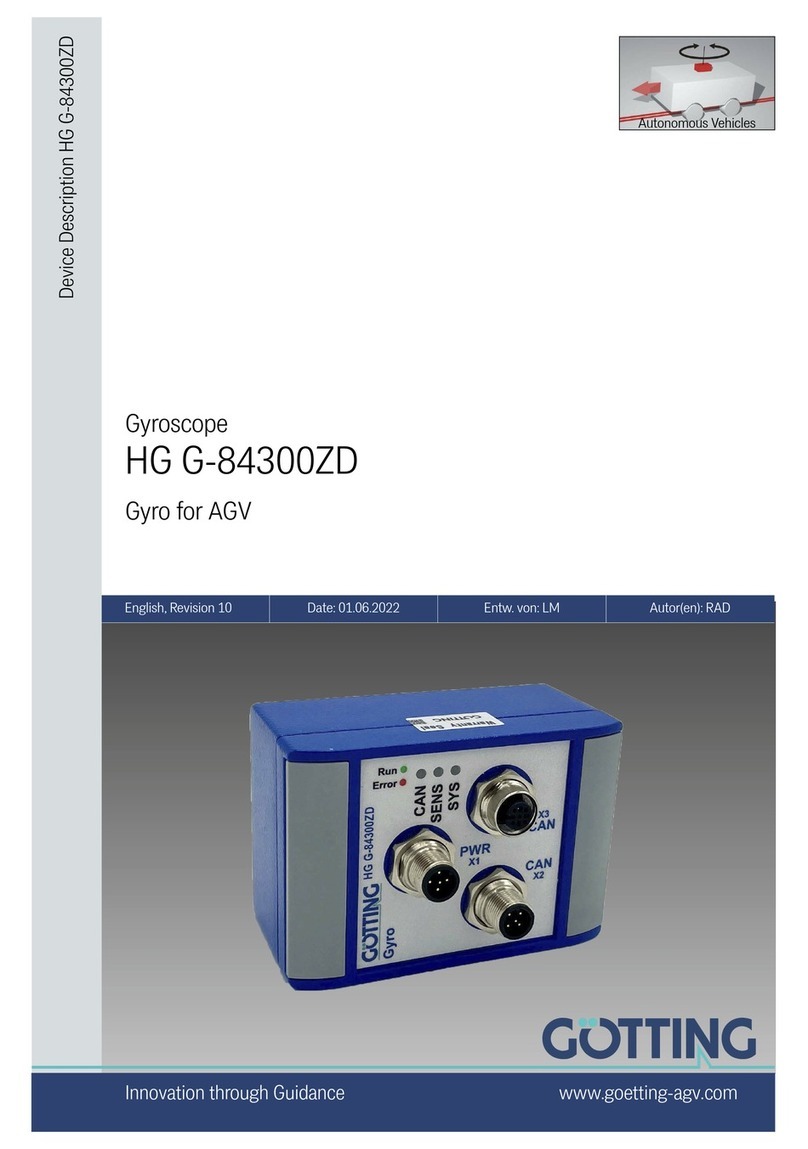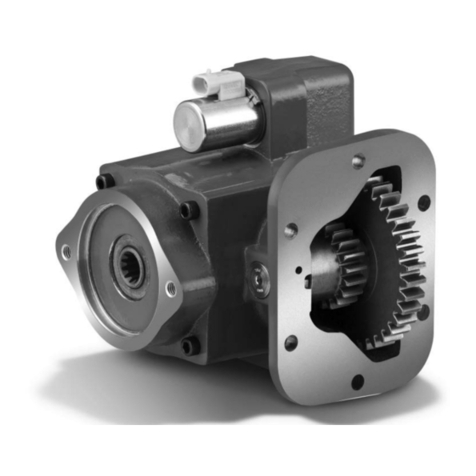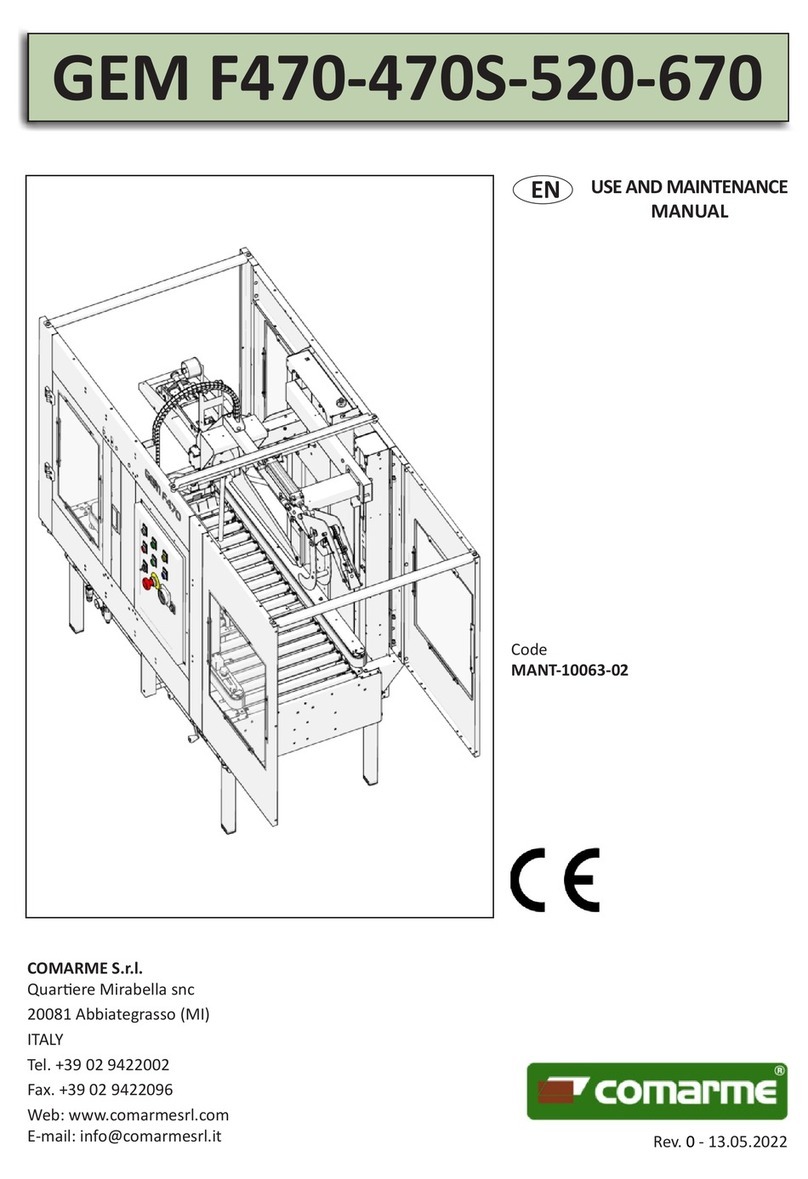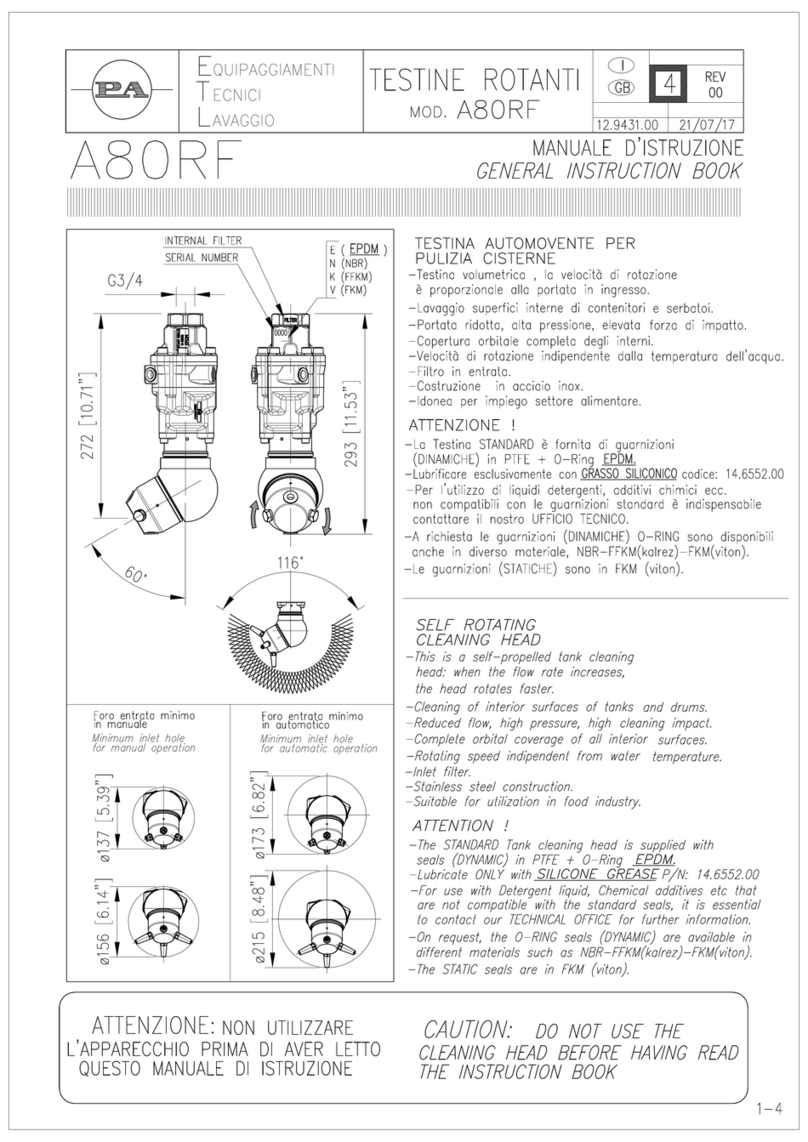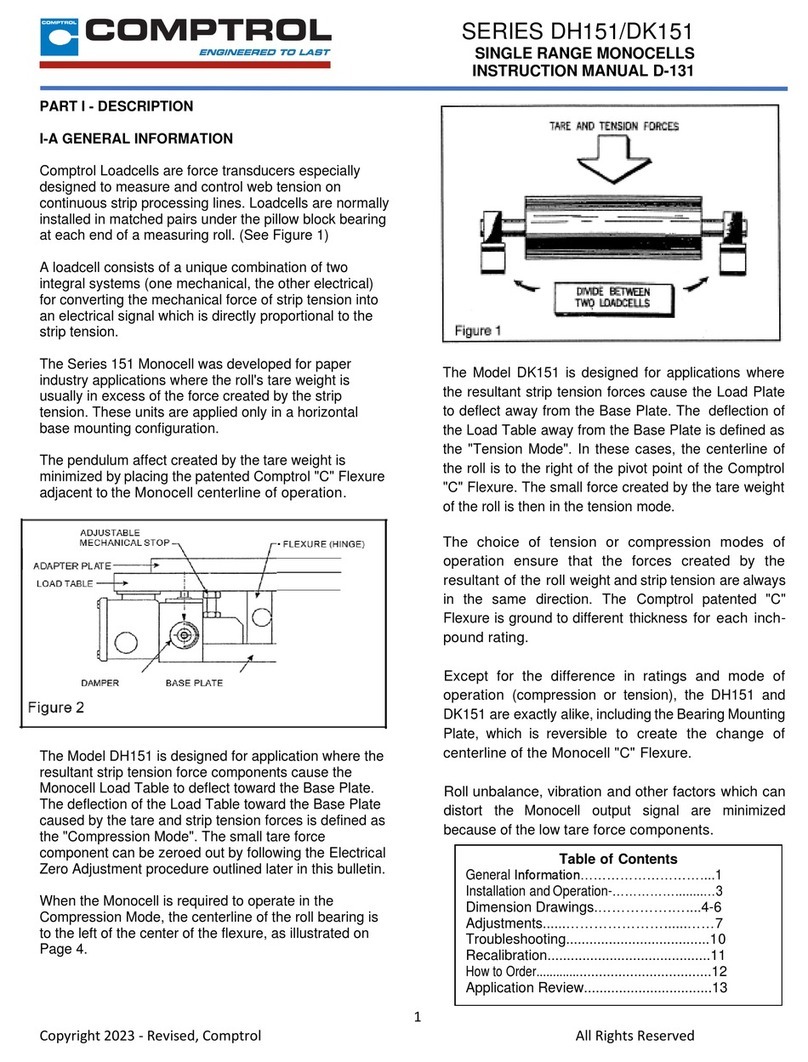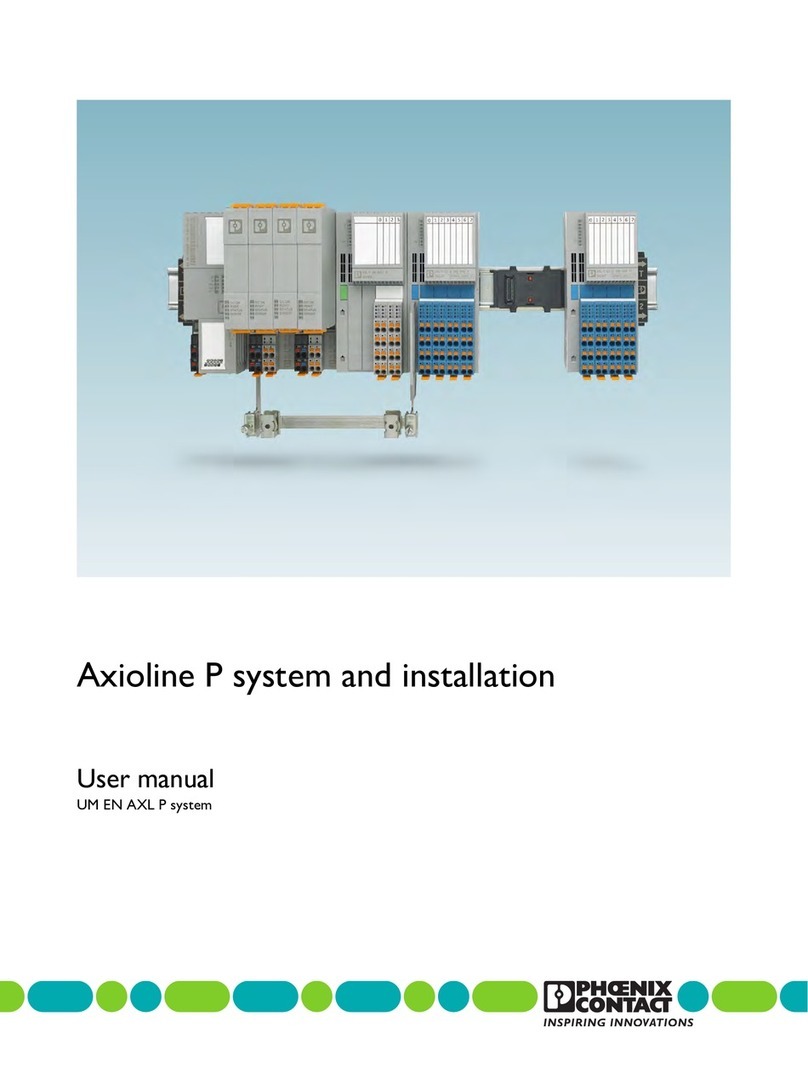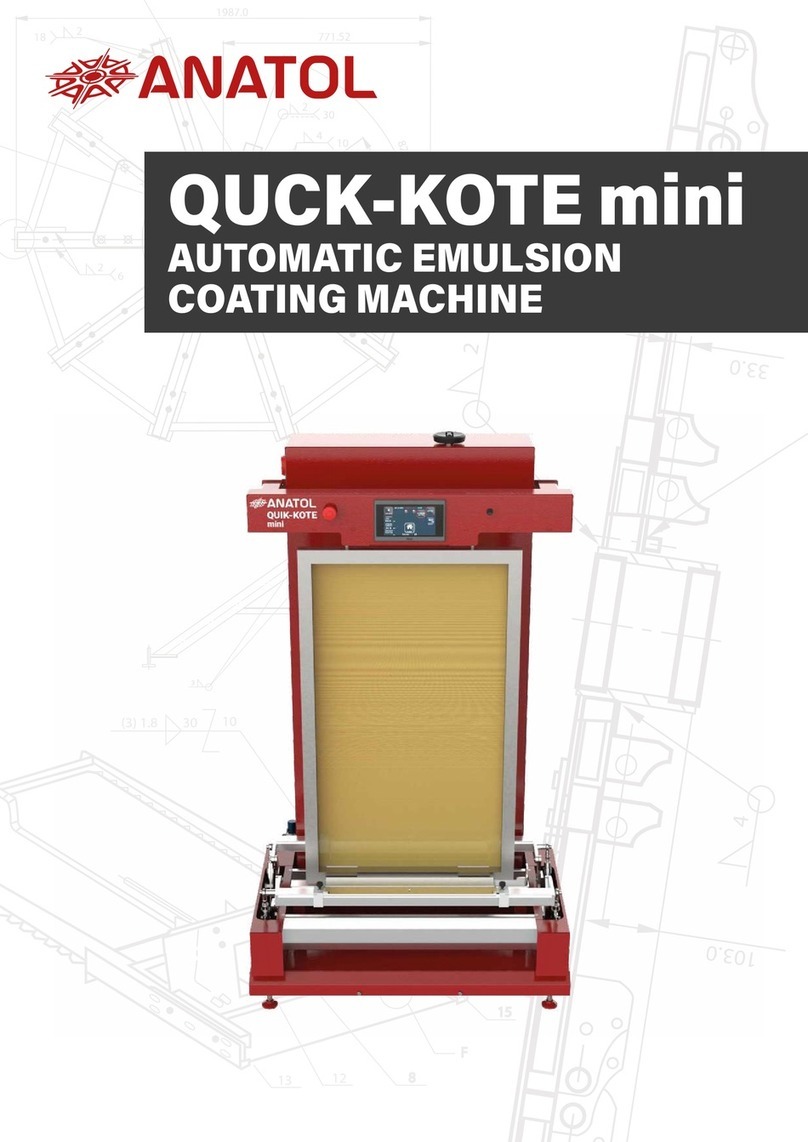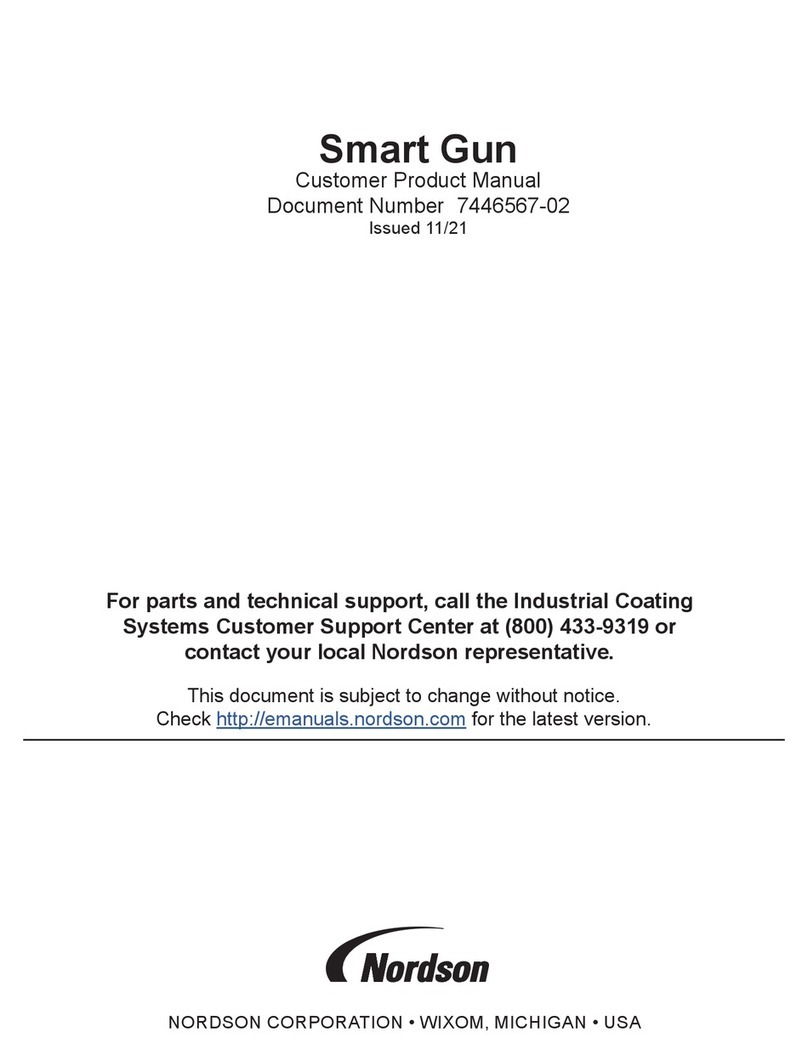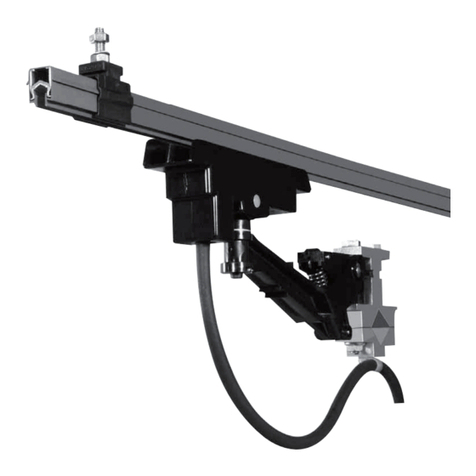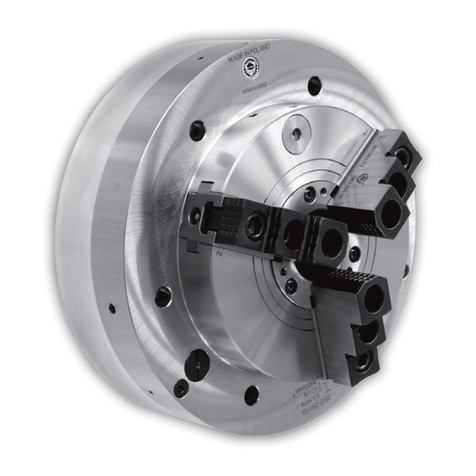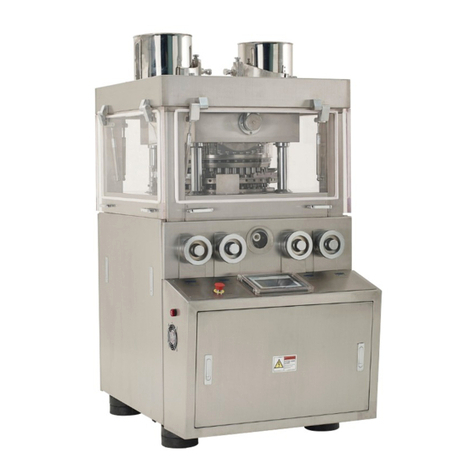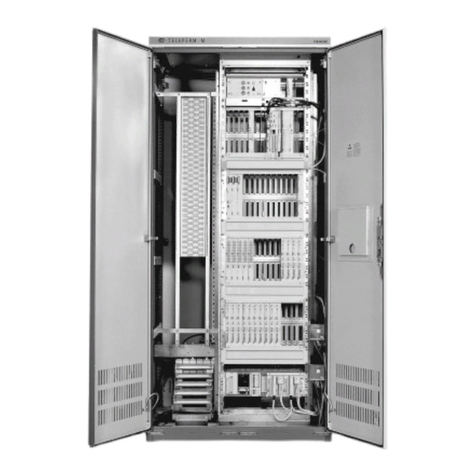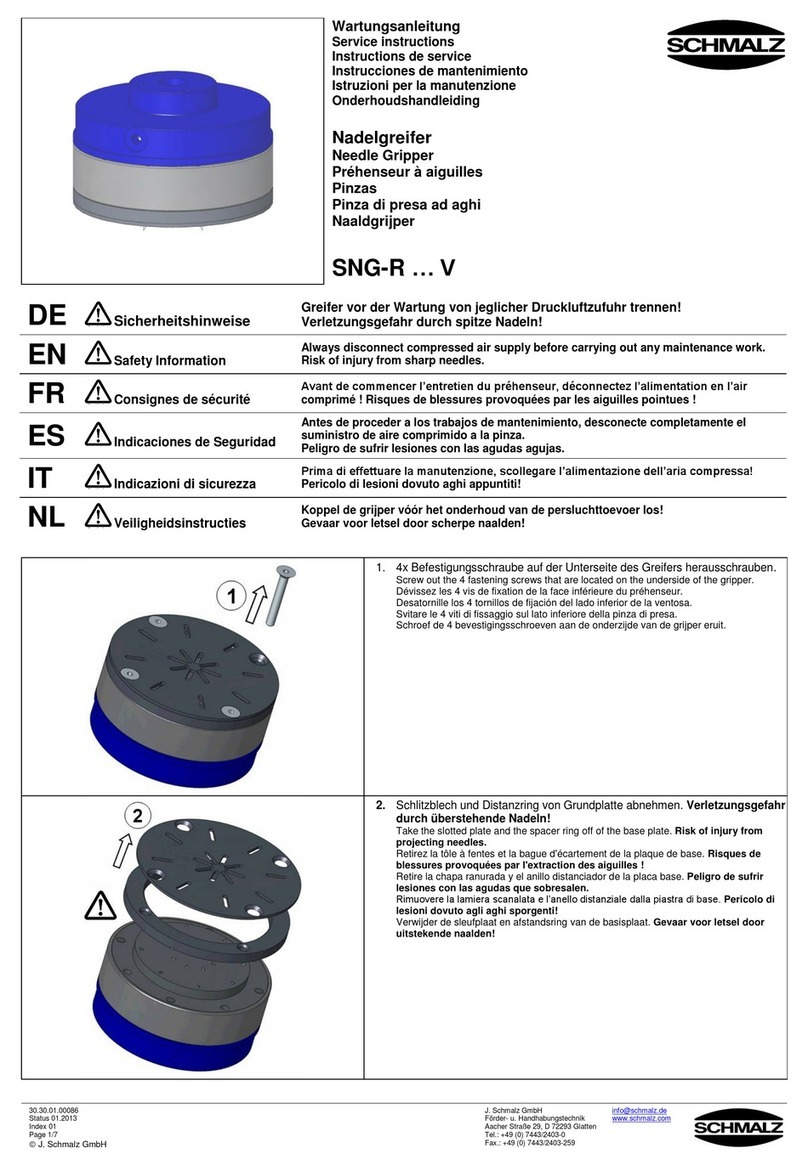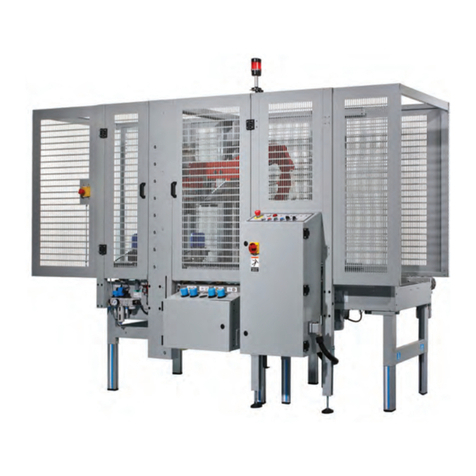CBS ArcSafe RRS-2 User manual

RRS
-
2
Technical Manual
P.O. Box 550
Argyle, TX 76226
(940) 382-4411
.CBS ArcSafe.com
(Remote Racking System)
CBS ArcSafe®

Published by CBS ArcSafe
®
, a division of
GroupCBS, Inc. P.O. Box 1557
Gainesville, Texas 76241, USA
CBS ArcSafe
®
P.O. Box 550
Argyle, Texas 76226
Copyright CBS ArcSafe
®
, 2010
Printed in the United States of America
Reproduction, adaptation, or translation without prior written permission is prohibited except as is allowed by law.
More products by CBS ArcSafe®
RRS-1 – Remote Racking System for rotary type breakers
The RRS-1 is a universal remote racking system capable of removing or inserting low and medium
voltage draw out rotary circuit breakers while the operator remains outside the arc flash boundary.
This device is portable, weighing less than 2 pounds, and user friendly requiring no modifications to
the switchgear or circuit breakers. Each system will be custom designed to fit your switchgear needs.
RRS-2 – Remote Racking System for extraction type breakers
The RRS-2 is a universal remote racking system capable of removing or inserting low and medium
voltage non-rotary circuit breakers while the operator remains outside the arc flash boundary. This
device is portable, weighing less than 2 pounds, and user friendly requiring no modifications to the
switchgear or circuit breaker. Each system will be custom designed to fit your switchgear needs.
RRS-3 – Single Application Remote Racking System
The RRS-3 system is an inexpensive single application remote racking system which allows the
operator to install and remove a breaker while standing 25 to 75 feet away with a hand control unit.
CBS ArcSafe also offers a radio remote option which allows for operation up to 15 feet away without
the need for an extension cable. The radio remote option in some cases allows for closed door racking
to occur once the RRS-3 has been attached to the breaker.
RSO – Remote Switch Operator
A remote switch operator is the power and control console for service personnel to remotely charge,
close, and trip circuit breakers from a safe distance using a CBS ArcSafe® RSA. The RSO can be used in
conjunction with the CBS ArcSafe® remote racking system for complete charge, close, trip, and racking
operations or independently as a stand-alone device for use with a remote racking system. Each CBS
ArcSafe® remote switch operator can also be operated with an optional wired/wireless pendant
station.
RSA – Remote Switch Actuator
A remote switch actuator allows service personnel to move, push, pull, charge, close, and/or trip
circuit breakers and other electrical equipment from a safe distance in conjunction with a CBS
ArcSafe® RSO. The remote switching actuator attaches to the front of your circuit breaker and is
mechanically assisted by magnets without the need for any modification to your switchgear. After
setup and installation the RSO controls the RSA’s operation.

RRS-2 Technical Manual iii
© 2010 CBS ArcSafe™
Table of Contents
1.0 Description .................................................................................................................2
. Components .................................................................................................................... 2
. . Structural Assembly ............................................................................................................... 2
. .2 Control Assembly ................................................................................................................... 7
. .3 Tooling Assembly ................................................................................................................... 7
2.0 Controls and Indications ..............................................................................................8
3.0 Preparation and Operation ....................................................................................... 10
3. Set up Training .............................................................................................................. 0
3.2 Unpacking the RRS-2 .....................................................................................................
3.3 Charging the RRS-2 ........................................................................................................ 2
3.4 Setting the Actuator Limit Switches.............................................................................. 3
3.5 Setting up the RRS-2 for Operation .............................................................................. 4
3.6 Current Control Module (CCM) Configuration ............................................................. 5
3.6. Manual Current Control Configuration ................................................................................ 5
3.6.2 Automatic Current Control Configuration ........................................................................... 7
3.6.2 Automatic Current Control Time Stop Configuration .......................................................... 9
4.0 Operation ................................................................................................................. 20
4. Circuit Breaker Installation ........................................................................................... 20
4. . Requirements for Installation .............................................................................................. 20
4. .2 Steps for Installation ............................................................................................................ 20
4.2 Circuit Breaker Removal ............................................................................................... 2
4.2. Requirements for Removal .................................................................................................. 2
4.2.2 Steps for Removal ................................................................................................................ 2
5.0 Maintenance ............................................................................................................. 22
5. Introduction .................................................................................................................. 22
5.2 Prior to Use ................................................................................................................... 22
5.3 After Use ....................................................................................................................... 22
5.4 Every 2 to 8 Months .................................................................................................. 22
6.0 Ordering Replacement Parts ..................................................................................... 23

RRS-2 Technical Manual ii
Appendix A: Specifications .............................................................................................. 27
.0 Specifications ................................................................................................................ 27
2.0 Available Additional Options ........................................................................................ 27
Appendix B: Troubleshooting Guide ................................................................................ 29
Appendix C: Wireless Camera System ............................................................................. 31
.0 Components .................................................................................................................. 3
2.0 Camera System Set-up .................................................................................................. 32
3.0 Camera System Operation ............................................................................................ 32
4.0 Camera Troubleshooting Guide .................................................................................... 33
Appendix D: Radio Remote PS......................................................................................... 35
.0 Components .................................................................................................................. 35
2.0 Radio Remote Models ................................................................................................... 36
3.0 Button Configurations ................................................................................................... 37

RRS-2 Technical Manual
© 2010 CBS ArcSafe
®
2012-04-18
About the User’s Guide
This user’s guide describes the functions and features of the CBS ArcSafe® RRS-2. This technical
document is intended to act as a simplified reference for users of the equipment, allowing for
safe, quick, and efficient use of the RRS-2 features.
Before You Begin
DANGER!
*This is a red hazard alert warning box; red hazard alert boxes contain information pointing
out potential hazards to personnel and equipment.
ATTENTION
This is a green information box; green information boxes are used to place
emphasis on
valuable information the user ill ant to pay particular attention to.
DANGER!
*Ensure that personnel using this equipment are adequately trained in the operation of the
switchgear they are planning to work with; that they are correctly stationed outside the arc
flash boundary; and that they comply with all applicable Federal State Local and In-house
safety regulations and procedures. Attention should be given to distance angle and
personal protective equipment (PPE).
DANGER!
*Ensure that
switchgear is properly maintained and in good working order before using the
RRS-2 on your switchgear. Contact your local group CBS service provider at www.gcbs.com
to assist in proper care and maintenance for your switchgear.
P.O. Box 550
Argyle, TX 76226
Tel: 940-382-4411
Fax: 940-382-9435
Website: .CBSArcSafe.com
Email: info@CBSArcSafe.com

RRS-2 Technical Manual 2
© 2010 CBS ArcSafe
®
2012-04-18
1.0 Description
The CBS ArcSafe® RRS-2 is a portable, highly configurable remote racking system designed to reposition
circuit breakers that are equipped with non-rotary racking mechanisms. The primary goal for the design
and operation of the RRS-2 remote racking system is to reposition circuit breakers with the operator
positioned safely outside of the arc flash boundary.
The RRS-2 is powered from either standard AC power or the internal battery. The RRS-2 is operated with
the pendant station via a 25’ pendant retractile cord (additional 25’ cords are available) or an optional
radio remote pendant station. The pendant station allows for the operator to manipulate the tooling
assembly which repositions the circuit breaker when equipped with the required tooling.
1.1 Components
The RRS-2 consists of three components, the structural, control, and tooling assemblies (breaker specific).
1.1.1 Structural Assembly
The RRS-2 structural assembly is made up of the frame (Fig. . .2), slide rail (Fig. . . ), cubicle brace (Fig.
. .6), transportation and stability wheels (Fig. . .9), and the (optional) floor locks/stabilizers (Fig. .2).
Slide Rail (Fig. 1.1.1) – The slide rail is an extruded aluminum track system, allowing for the quick
repositioning of the cubicle brace and actuator assembly. Several optional slide rail
configurations are available, including single and double rails, fixed or extended-height rail
mounting, and several rail lengths.
Steel Frame (Fig. 1.1.2) – All components of the RRS-2 are directly or indirectly mounted to and
supported by the steel frame. The curved top tubes act as handles when tilting the unit on the
rear wheels for transportation. Integrated storage hooks are provided to secure the pendant
station and pendant retractile cord when not in use.
Cubicle Brace (Fig. 1.1.6) – The cubicle brace is a telescoping support arm with brace, designed to secure
the RRS-2 to the circuit breaker cubicle during operation. The cubicle brace engages the RRS-2
slide rail, allowing it to be repositioned as required. The cubicle side of the brace is configured
with a cubicle specific brace (Fig. 3) designed to quickly secure the cubicle brace and the RRS-2 to
the cubicle.
Tooling (Fig. 1.5) – The RRS-2 tooling is custom built for every breaker and allows for the RRS-2 to attach
to a variety of breakers simply by swapping out the tooling. Typically, the main actuator racks
the circuit breaker while the secondary actuator depresses the circuit breaker interlocks although
this may differ depending on the breaker and switchgear being repositioned.

RRS-2 Technical Manual 3
© 2010 CBS ArcSafe
®
2012-04-18
.
Slide Rail
4.
Tooling Locks
7.
Pendant Station
2. Steel Frame 5. Main Actuator 8. Control Cabinet
3. Slide Rail Locks 6. Cubicle Brace 9. Transportation and
Stability Wheels
2
2
3
3
4
5
6
7
8
9
Figure . – Structural Assembly
Floor Locks (
optional
)
Stabilizers (optional)
Figure .2 – RRS-2 Floor Locks and Stabilizers (optional)

RRS-2 Technical Manual 4
© 2010 CBS ArcSafe
®
2012-04-18
Transportation and Stabilization Wheels (Fig. 1.1.9) – The rear transportation wheels allow the RRS-2 to
be tilted back and transported, similar to a hand-truck. The front stability wheels create a secure
and steady, level platform during operation and storage. The solid rubber transportation wheels
can be replaced with pneumatic tires (optional) for easier movement over rough terrain. The
unit can also be equipped with stair climber rails (optional).
Floor Locks and Stabilizers *optional (1.2) – The RRS-2 may be equipped with optional floor locks or
stabilizers. Engaging the floor locks lifts the transportation wheels off the ground to limit RRS-2
movement during operation. The stabilizers help to prevent the RRS-2 from tilting backwards
during operation.
Stair Climber Rails *optional (Fig. 1.3) – The stair climbers allow for the RRS-2 to easily be moved
up/down stairs and in/out of vehicles.
Pneumatic Tires *optional (Fig. 1.4) – The RRS-2 may be equipped with optional pneumatic tires in order
for the RRS-2 to easily travel over gravel or other rough surfaces.

RRS-2 Technical Manual 5
© 2010 CBS ArcSafe
®
2012-04-18
Figure .3 – RRS-2 Stair Climber Rails (optional)
Figure .4 – RRS-2 Pneumatic Tires (optional)

RRS-2 Technical Manual 6
© 2010 CBS ArcSafe
®
2012-04-18
Figure .3 – Pendant Station
Figure .4 – Control Cabinet, Internal
Figure .5 – Interlock Actuators and Tooling
ATTENTION
These are only t o interlock actuators and tooling of many designs that are available. Every RRS-2
tooling accessory is custom built for your s itchgear.
Siemens
Type MA, Foot
-
Pedal Interlock
Westinghouse Type DB, Position Interlock
PS-2 PS-4 PS-R4 PS-R6

RRS-2 Technical Manual 7
© 2010 CBS ArcSafe
®
2012-04-18
1.1.2 Control Assembly
The RRS-2 control assembly includes the pendant station (Fig. .3) and control cabinet (Fig. .4).
Pendant Station (Fig. 1.1.7 Fig. 1.3)
The pendant station controls the tooling assembly. There are many different types of pendant stations
available including the PS-2 (2 button), PS-4 (4 button), PS-R4 (radio remote 4 button), PS-R6 (radio
remote 6 button). On the wired models the 25’ pendant retractile cord connects the pendant station to
the control cabinet. The cord can be uncoupled from the control cabinet via a screw connector for
storage or to add optional pendant extension cords. Onboard storage of the pendant station and pendant
retractile cord is provided via the frame storage hooks or the storage bag. The pendant station and
pendant retractile cord can be replaced with an optional radio remote system, consisting of a radio
remote pendant station and receiver.
Emergency Stop Pushbutton
When the red emergency stop pushbutton is depressed the unit is deactivated, but NOT turned
off. In order to resume normal operation the pushbutton must be turned counterclockwise.
Pendant Retractile Cord (Fig. 1.1.13)
The pendant retractile cord allows for the operator of the RRS-2 to distance themselves from the breaker
during the racking/unracking operations.
DANGER!
*The pendant retractile cord may not remove the service personnel from the arcflash area in
some circumstances. Attention should be given to distance angle and personal protective
equipment (PPE). If the operator cannot leave the arcflash area with the length of the cable
we offer extension cables radio remote pendant stations and wireless video systems to
ensure that the operator can be as far away from the racking/unracking operation as needed
for safety.
Control Cabinet (Fig. 1.1.8 Fig. 1.4)
The primary function of the control cabinet is to house and protect the system controls and power supply.
Additional controls, including the main power switch and controls for optional equipment are located on
the control cabinet.
Cabinet Access (Fig. 1.1.14)
The control cabinet can be opened using a flat-head screwdriver to unlock the cabinet. The cabinet
houses the control wiring, and battery for the RRS-2.
1.1.3 Tooling Assembly
The components of the RRS-2 tooling assembly are dependent on the circuit breaker being racked
however the components generally include the main and secondary linear actuators and the tooling that
adapts the actuators to the circuit breaker racking mechanism.
Main Actuator (Fig. 1.1.5) – The main actuator supplies the driving force needed to reposition switchgear.
There are two models available the standard 600 ft lb (80 m-kg) and the optional 200 ft lb ( 70 m-kg)
actuator. They both use an internal clutch to limit force available to prevent over racking. The actuator
attaches to the RRS-2 via the slide rail, and can easily be repositioned with the lever locks (Fig. 2-4).
Secondary Actuator (Fig. 1.5) – The secondary actuator is generally used on the circuit breakers interlocks
and supplies the driving force needed to engage circuit breaker interlock devices which are normally
actuated manually by the operator. Mounting of the secondary linear actuator is dependent on the
circuit breaker type.

RRS-2 Technical Manual 8
© 2010 CBS ArcSafe
®
2012-04-18
2.0 Controls and ndications
Current Control Module (Fig. 2.1.1) – The current control module controls the current limit settings of the
CBS ArcSafe® RRS-2. The current control module also switches the current limiter between manual
and automatic shutoff operation.
Lights Control Switch (Fig. 2.1.2) *optional – The light control switch operates the optional CBS ArcSafe®
LED lighting system that is attached to the RRS-2. Please remember to turn the lights off when not in
use.
Camera Control Switch (Fig. 2.1.3) *optional – The camera control switch operates the optional CBS
ArcSafe® camera system. The camera sends a wireless video feed to your display monitor. For more
information please see Appendix C for the wireless camera system user’s guide.
Power Switch and Indication Light (Fig. 2.1.4) – The main power control switch to the unit. The switch is
ON when the unit is operating, and OFF when the unit is stowed and/or charging. The power
indication light indicates the state of the power switch.
Main Linear Actuator Port (Fig. 2.1.5) – The main linear actuator port provides power for the main
racking functions of the RRS-2 when the main linear actuator cable is properly connected.
Auxiliary Linear Actuator Port (Fig. 2.1.6) – The secondary linear actuator port provides power for the
auxiliary racking procedures needed when the auxiliary linear actuator cable is properly connected.
Pendant Station Port (Fig. 2.1.7) – The pendant station port allows for the connection of the pendant
station and optional extension cords.
Low Battery Indicator (Fig. 2.1.8) – When the battery is low the current control module will display
“-bA”indicating a low battery. In order for continued operation the RRS-2 will need to be connected
to AC power in order to charge.
ATTENTION
The RRS-2 may be used for racking equipment hile charging on AC po er.
Over-Current Protection Relay (located inside cabinet) – The over-current protection relay protects the
electrical system of the CBS ArcSafe® remote racking system. The relay will trip to remove power
from the unit when an over-current condition exists; a manual reset is required to restore power to
the system.
*Contact CBS Arc Safe™ for ordering information at (940) 382-44

RRS-2 Technical Manual 9
© 2010 CBS ArcSafe
®
2012-04-18
MODEL: RSS
-
1
“Distance is Safety”
UP
INSTALL
REMOVE
DOWN
MAX CURRENT
www.
CBS ArcSafe
.com
8
00
L ON
I
G
H
T
S OFF
C ON
A
M
E
R
A OFF
Figure
2.
–
RRS
-
2
Electrical Cabinet
Mounted Controls
2
3
4
5
6
7
8
*lights and camera are OPTIONAL equipment
MODEL: RRS
-
2

RRS-2 Technical Manual 0
© 2010 CBS ArcSafe
®
2012-04-18
3.0 Preparation and Operation
The preparation and operation of the remote rack is described in the following sections and include:
3.1 Set up Training
This section lists the necessary steps to
set up training for your RRS-2.
3.4 Setting the Actuator Limit Switches
This section describes the procedure for
charging the remote racking system to
prepare it for future operations.
3.2 Unpacking the RRS-2
This section lists the necessary steps to
uncrate the remote rack and prepare it
for operational readiness.
3.5 Setting up the RRS-2 for Operation
This section lists the preliminary steps for
operation.
3.3 Charging the RRS-2
This section describes the procedure for
charging the remote racking system to
prepare it for future operations.
3.6 Current Control Module
This section explains the purpose of the
current control module and how to use
the current control system.
3.1 Set up Training
Included with your purchase of the RRS-2 is 4 hours of training from either a CBS ArcSafe® equipment
representative or an approved CBS ArcSafe® outside representative. Please call CBS ArcSafe® at (940)
382-44 to set up this FREE training seminar for your service personnel prior to ANY operations.
DANGER!
*It is VERY important to have proper training before using this unit as improper use may
damage your RRS-2 and void all warranties written or implied.

RRS-2 Technical Manual
© 2010 CBS ArcSafe
®
2012-04-18
3.2 Unpacking the RRS-2
The RRS-2 is placed in a protected condition to allow the unit to be shipped more efficiently and to
prevent damage from occurring. Perform the following steps to unpack the RRS-2 and prepare it for
operation.
DANGER!
*Do not unpack the RRS-2 until your FREE training seminar has been provided. Unpacking
the unit before training may void your warranty. This guide is intended for personnel that
have already received the proper training.
. Remove the cardboard cover by cutting the perimeter at the base with a
utility knife or removing the nails/screws.
2. Carefully remove the steel strapping that secures the remote rack to the
pallet and roll the unit onto the floor.
3. Inventory the CBS ArcSafe® RRS-2 components to ensure nothing is
missing. A CBS ArcSafe® representative will assist with inventory before
the FREE training seminar.
4. If pneumatic tires are installed on the unit (optional), ensure the tires are
inflated to their proper pressure.
5. Properly attach necessary tooling to the RRS-2.
6. The CBS ArcSafe® RRS-2 is now ready for charging and setting up for
operation.

RRS-2 Technical Manual 2
© 2010 CBS ArcSafe
®
2012-04-18
3.3 Charging the RRS-2
The CBS ArcSafe® remote racking unit is equipped with batteries to enable operation when AC power is
unavailable. Perform the following steps to charge and store the unit to prepare for future operation:
. Rotate the power switch to the OFF position if not using the RRS-2.
ATTENTION
It is perfectly safe to charge the RRS-2 during operations, ho ever if you leave the unit on
hile storing it the unit ill pull unnecessary electricity from the outlet.
2. Connect the RRS-2 Power Supply into an AC outlet via the included power cable and
ensure that the red light on the side of the unit turns on while plugged in and
charging.
3. While charging feel free to use the RRS-2 in normal operation mode.
4. Whenever possible, leave the CBS ArcSafe® RRS-2 plugged in and properly stowed
with either the CBS ArcSafe® dust cover or the waterproof cover to ensure the RRS-
2 is protected until the next operation. Once fully charged the battery charger
switches to a ‘Standby Voltage Mode’ maintaining a fully charged battery.
DANGER!
*Storing the RRS-2 in freezing temperatures will drastically reduce battery performance CBS
ArcSafe® recommends storing the unit where temperatures are regulated 68˚F to 77˚F. If
storage in freezing temperatures is required contact CBS ArcSafe® for handling proper
storage solutions.
ATTENTION
At or belo 40°F / 5°C e recommend using the AC po er supply over the battery po er in
order for the unit to operate at max po er. At temperatures lo er than 40°F / 5°C the
current provided by the batteries becomes limited and thus may not provide enough racking
po er for your breaker.

RRS-2 Technical Manual 3
© 2010 CBS ArcSafe
®
2012-04-18
3.4 Setting the Actuator Limit S itches
On the actuators used for pressing interlocks and for installing/removing breaker there are magnetic limit
switches that help to control how far the actuators extend and retract. This allows the actuators to be set
so that they only extend and retract to set limits and cannot over extend/retract themselves for
operations where specific distances need to be traveled.
There are three different types of operational actuators; these three types are non-adjustable, adjustable
by Philips head, and adjustable by Allen wrench. The non-adjustable actuators are generally quite small
and will never need to be adjusted and there are no limit switches on them to set.
Adjustable by Philips head screwdriver
. Loosen the two screws with a Philips head screwdriver.
2. Position the limit switches as desired, these switches determine how the actuator
extends and retracts.
3. Secure the limit switches by screwing back in the screws – be EXTREMELY careful
not to over tighten these screws as they are fragile, very little torque is needed in
order to secure those limit switches.
Adjustable by Allen wrench
. Locate the plastic cover with wires entering.
2. Gently pry the plastic cover off with a flathead screwdriver.
3. Loosen the two set screws with a #2 Allen Wrench.
4. Position the limit switches as desired, these switches determine how the actuator
extends and retracts.
5. Secure the limit switches by screwing back in the set screws – be EXTREMELY
careful not to over tighten these screws as they are fragile, very little torque is
needed in order to secure those limit switches.
Figure 3.4 – Adjustable by Screw actuator
Limit switches

RRS-2 Technical Manual 4
© 2010 CBS ArcSafe
®
2012-04-18
3.5 Setting up the RRS-2 for Operation
This section explains the steps necessary to prepare the RRS-2 for racking operations, however tooling has
been tailored to your specific needs and may require a different operational setup then described here.
. Ensure the RRS-2 is charged and/or the unit is plugged in to an AC power source.
2. Ensure the breaker being racked is OPEN according to manufacturer specifications.
3. Position the remote racking system in front of the circuit breaker to be racked, with
the cubicle brace aligned with the circuit breaker cubicle.
4. Ensure the safety shut off switch on the pendant station is off.
5. Turn the power switch to the ON position, the green POWER ON light will light up.
6. Position the necessary tooling to the breaker.
ATTENTION
For selected models of circuit breakers, the RRS-2 ill move slightly. This may include the
RRS-2 slightly rocking or rolling for ards/back ards, ho ever violent movements should not
occur. If any movement seems concerning please contact your CBS ArcSafe® agent.
7. The RRS-2 is now ready for operation.

RRS-2 Technical Manual 5
© 2010 CBS ArcSafe
®
2012-04-18
3.6 Current Control Module (CCM) Configuration
The current control module (CCM) can be set to either manual or automatic operation, however the
current control module limits the max current to 30 A even in manual mode. In manual operation the
current control module is capable of storing the max current values for setting of the CCM for future
Automatic (Normal) remote rack operations.
DANGER!
The CCM limits maximum current to 30 A to prevent extremely high values of torque from being placed on your
switchgear and if the CCM Installation or Removal current ever exceeds 25 amps or you notice high levels of
variance between 1 breaker compared to other similar pieces of gear you should look into performing
maintenance to the switchgear or investigate the switchgear for damaged racking mechanisms.
3.6.1 Manual Current Control Configuration
Using manual current control allows for the monitoring and recording of the current draw during
the racking operation, which allows for easier setting of the current control module for future
Automatic (Normal) remote rack operations. In order to set the current control module for
manual control the current limit settings must be set to 0.0 amps. Perform the following steps to
set the current control limit settings to 0.0 amps:
. Ensure that the RRS-2 has been properly set up for operation.
2. With the main power switch ON, press and hold the install/remove trip point
pushbutton while pressing the UP or DOWN current trip pushbuttons to 0.0 amps.
3. In order to store the maximum current being pulled during the racking operation
press the down button so that the decimal point on the CCM is blinking. The LED
display will indicate the reading being set and also display the highest current being
drawn while the RRS-2 is in operation. If the down button is not pressed than the
CCM will display the present amount of current being drawn.
4. Uncoil the pendant retractile cord and exit the arc flash boundary to a safe distance
from the circuit breaker.
5. The internal memory of the current control module will retain the last value set.
DANGER!
*If using the RRS in manual mode prevents the service personnel from moving outside the
arc-flash boundary comply with all applicable Federal State Local and In-house safety
regulations and procedures’ regarding arc-flash. CBS ArcSafe® also offers a remote camera
system which can be used to view the current control LCD and/or the racking operations
remotely.
ATTENTION
Monitoring and recording the current dra on the current control module during the racking
operation ill allo for easier setting of the current control module for future Automatic
(Normal) remote rack operations.

RRS-2 Technical Manual 6
© 2010 CBS ArcSafe
®
2012-04-18
6. Rack the circuit breaker normally.
7. When the circuit breaker racking operation is complete, the RRS can be detached
from the circuit breaker and stowed.
a. Rewind the pendant retractile cord and return the pendant station to the storage hooks.
b. Disengage the foot brakes if engaged.
c. Remove the circuit breaker racking adapter and any extensions from the breaker and
RRS-2.
d. Turn the power switch off.
e. Cover the RRS-2 with the dust cover or the waterproof cover (optional) and store the
unit in a clean, dry location.
Table of contents
Other CBS ArcSafe Industrial Equipment manuals
